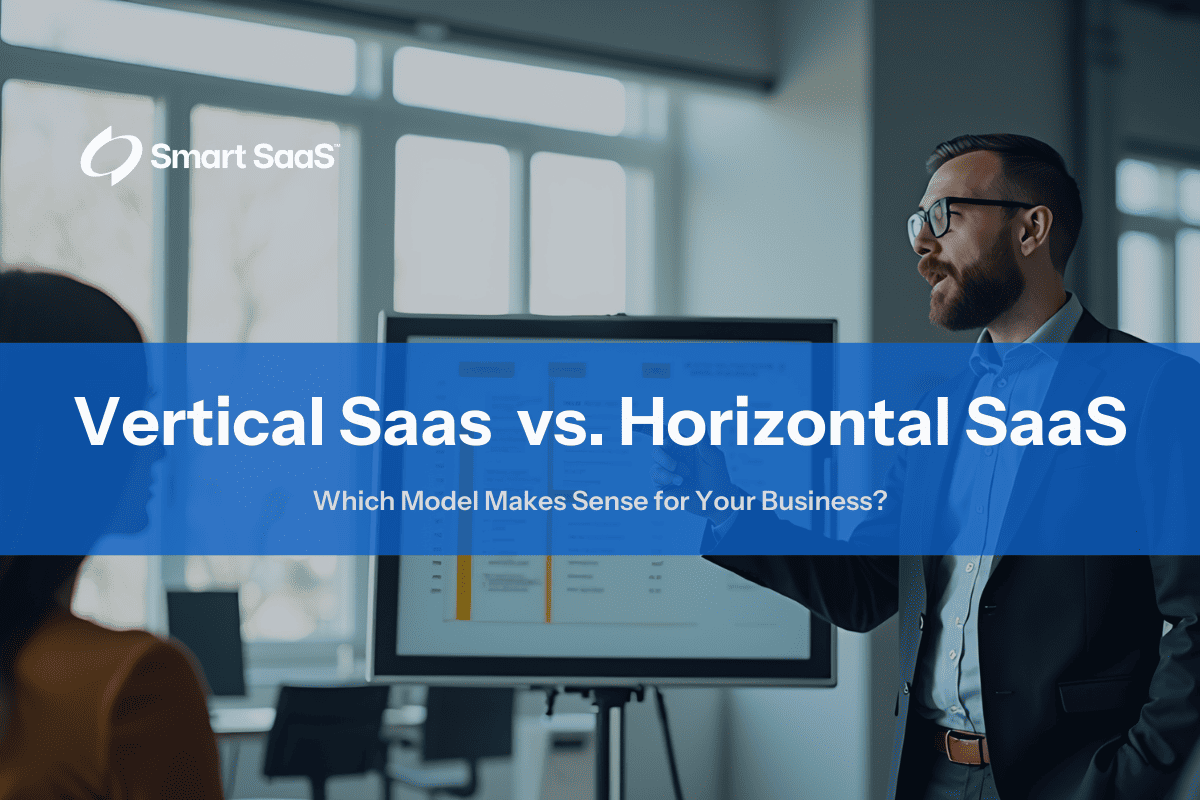

Wednesday, February 5, 2025
Kevin Anderson
Software as a Service (SaaS) has revolutionized how organizations access and leverage business applications. Instead of buying perpetual licenses and deploying on-premise infrastructure, many companies simply log into a cloud-based subscription platform that manages everything behind the scenes. Yet, not all SaaS offerings are alike. Some (horizontal SaaS) target broad, cross-industry use cases—think generic project management or email marketing tools. Others (vertical SaaS) take a niche SaaS solutions approach—designed to serve a single industry with specialized compliance, domain features, and advanced workflows.
This leads to a critical question: Vertical SaaS vs. Horizontal SaaS—which model makes sense for your business? While each approach has merit, the eBook Escape the SaaS Trap warns that convenience alone can conceal hidden dangers like vendor lock-in, skyrocketing subscription costs, or data control risks. As you consider specialized (vertical) vs. broad (horizontal) SaaS, it’s essential to keep your eyes open to issues such as vertical SaaS lock-in, the cost of tailored compliance, and the future agility of your organization.
Below, we’ll break down the main differences, pros, and cons of both models. We’ll also offer strategies to avoid the pitfalls that Escape the SaaS Trap highlights—ensuring that your SaaS choice empowers your business rather than ensnaring it.

Let’s start by clarifying the differences between horizontal SaaS, which casts a wide net across multiple industries, and vertical SaaS, which zeroes in on a single domain with specialized needs. Understanding these foundational concepts will help you determine which approach aligns best with your organization’s requirements.
A horizontal SaaS platform targets universal business functions—like CRM, project management, email marketing, or HR management—applicable across multiple industries. Examples include:
Vertical SaaS (also called niche SaaS solutions) cater to a single domain, incorporating specialized compliance measures, data structures, and workflow automation aligned with that industry. Examples include:
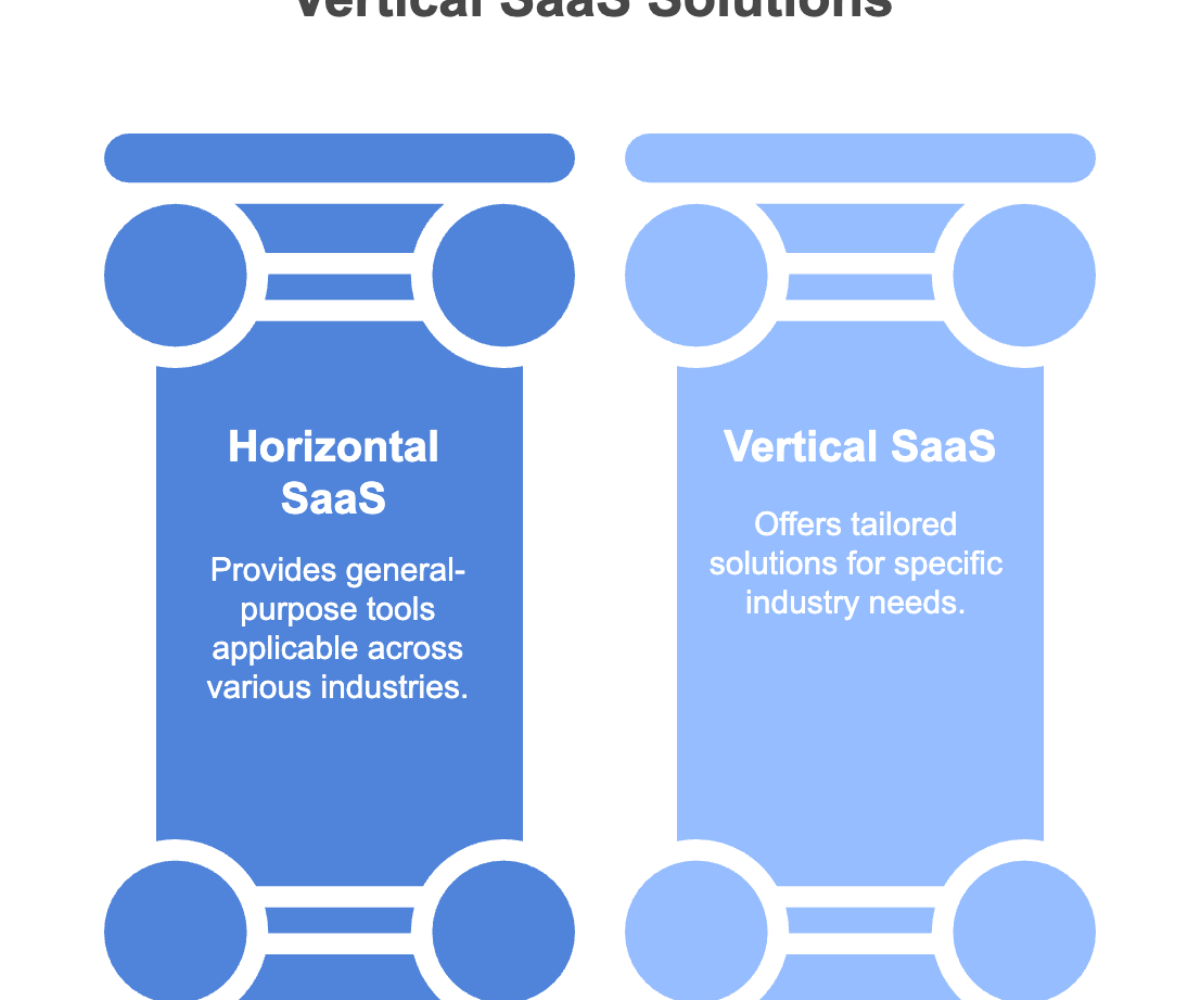

Horizontal SaaS solutions offer broad functionality and quick deployment, but they may fall short for industries needing deep specialization. Below are the primary advantages and drawbacks of choosing a horizontal model.
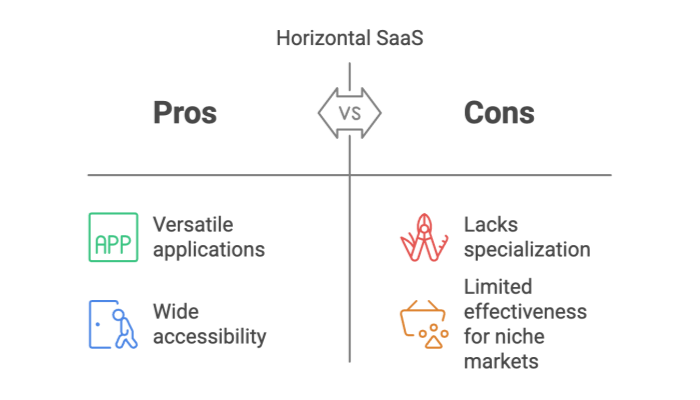

Vertical SaaS platforms excel in niche domains by offering deep customization and built-in compliance, but they also come with higher costs and potential vendor lock-in. Let’s explore these in detail.
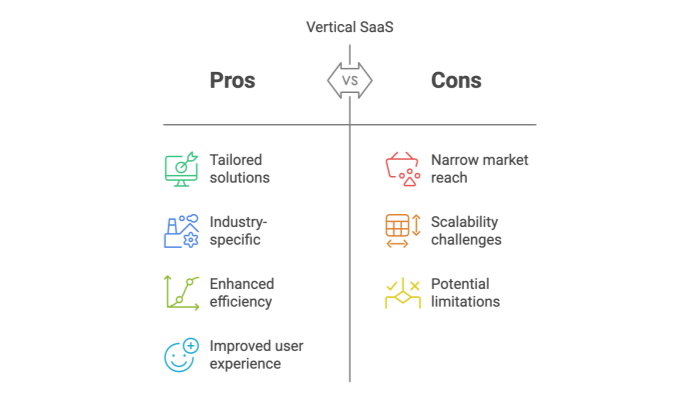

Vertical SaaS shines in scenarios where compliance, specialized workflows, or mature organizational structures demand industry-specific capabilities. Below are some key situations where a vertical approach can offer substantial advantages.
In healthcare, finance, government contracting, or defense, specialized compliance is non-negotiable. Vertical SaaS solutions typically incorporate domain-specific controls, audits, and encryption for sensitive data.
Example: A mid-sized clinic uses a vertical healthcare SaaS to manage EHR, patient scheduling, and telehealth in a HIPAA-compliant environment. A horizontal CRM wouldn’t have these medical record features or the same level of data privacy.
Manufacturing, logistics, or life sciences often demand real-time data from sensors or specialized supply chain logic. A generic tool might require extensive customization—whereas vertical SaaS includes these features from Day One.
Vertical SaaS can be more expensive or impose deeper onboarding. Organizations that can support specialized training, change management, and thorough vendor negotiations benefit from advanced capabilities without cost surprises.
Pro Tip (From Escape the SaaS Trap): Even if specialized compliance and deep customization are vital, ensure you have exit clauses, data export guarantees, and thorough vendor SLAs that mitigate vertical SaaS lock-in.
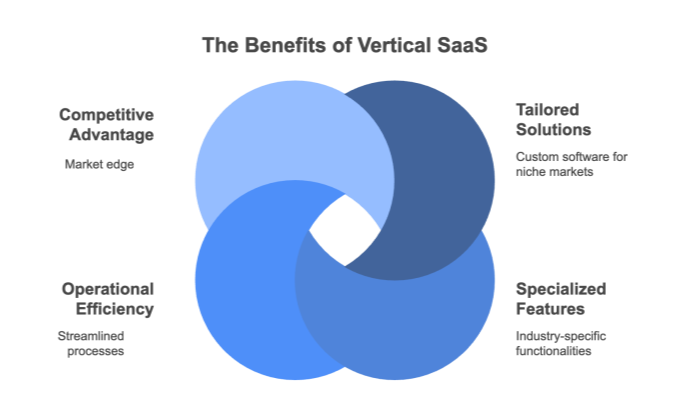

Horizontal SaaS models thrive in environments that don’t require heavy compliance or specialized workflows. Here are common scenarios where a broad, one-size-fits-all approach might be sufficient—and even preferable.
Smaller or emerging businesses often require a quick, cost-effective tool for CRM, collaboration, or marketing. Horizontal SaaS typically has simpler setups and robust support communities, making it ideal for new ventures.
If the daily tasks revolve around widely applicable activities—like email marketing, task tracking, or basic ERP functionalities—a horizontal platform’s standardized approach might be sufficient. Overly specialized solutions could be overkill.
Companies that don’t handle highly regulated data—like minimal consumer financial data or sensitive medical records—won’t need the specialized compliance frameworks typical of vertical SaaS. A wide-ranging platform might suffice.


Regardless of whether your choice is vertical or horizontal SaaS, Escape the SaaS Trap highlights critical pitfalls to watch out for. Understanding these can help you select and manage your SaaS solutions more effectively.
Problem:
- A vertical solution might be so niche that a pivot or expansion requires re-platforming.
- A horizontal solution might be too generic, forcing costly add-ons or custom modules.
Solution: Align with medium-term roadmaps to ensure the SaaS can adapt to future market expansions. Audit feature coverage to confirm must-have requirements are readily available.
Problem:
- Both vertical and horizontal providers can trap data in proprietary formats or charge high export fees.
- Vertical SaaS can be riskier if it’s the only domain-friendly solution, giving the vendor undue leverage.
Solution: Seek “Smart SaaS” providers who commit to fair data ownership. Negotiate data portability and export costs upfront.
Problem:
- Horizontal SaaS might claim universal APIs, but deeper workflows or compliance remain unaddressed.
- Vertical solutions often limit integration to their curated ecosystem.
Solution: Run a pilot with real data sets to test integration complexity. Demand transparent API docs from vendors.
Problem:
- Vendors may advertise a low base price but lock critical features behind expensive enterprise tiers.
- Usage quotas can trigger penalty fees or forced upgrades.
Solution: Thoroughly review pricing tiers and ask about overage fees. Budget for growth by projecting usage two years out.
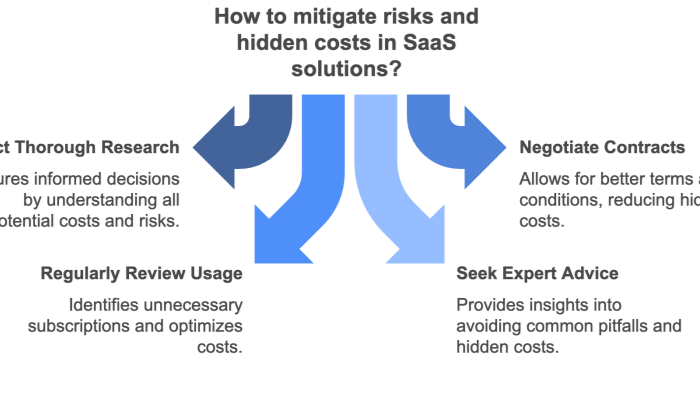

Whether you choose a vertical or horizontal SaaS solution, it’s crucial to maintain flexibility. Below are some strategies inspired by the “Smart SaaS” framework outlined in Escape the SaaS Trap.
In some cases, a blend of horizontal and vertical solutions offers the best of both worlds:


To illustrate how these approaches play out in practice, consider two contrasting case studies. One involves a specialized healthcare startup opting for a vertical EHR solution; the other, a digital marketing agency relying on horizontal SaaS tools.
Scenario: A telehealth clinic for specialized therapy opts for a healthcare-focused EHR platform with integrated scheduling, e-prescriptions, and insurance claims.
Pros: Rapid compliance with HIPAA, no need to custom build telehealth features.
Cons: High enterprise pricing, forced updates for new telemedicine protocols, potential vendor lock-in if expanding to multiple states with different regulations.
Lessons: Specialized compliance saved time but introduced a single point of vulnerability if the vendor doesn’t adapt quickly to new requirements.
Scenario: A digital marketing shop combines Asana for project management, Mailchimp for email marketing, and Google Workspace for collaboration.
Pros: Quick to deploy, predictable monthly fees, well-known tools with strong support.
Cons: Potential data duplication, limited specialized compliance for regulated clients, and siloed tasks across multiple apps.
Lessons: The breadth of horizontal SaaS works for a general marketing agency, but advanced vertical solutions might be needed for specialized sectors like pharmaceutical marketing.
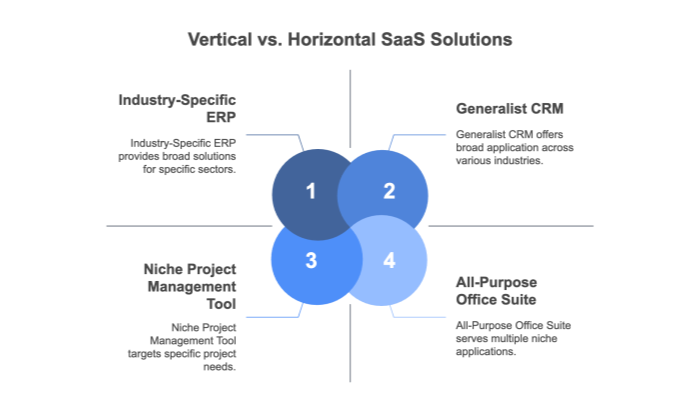

The SaaS landscape continues to evolve, with new niche industries emerging and AI-driven features becoming standard. Whether you lean vertical or horizontal, staying informed on upcoming trends will help you remain competitive.
As industries further segment, vendors might deliver hyper-specific solutions—telemedicine for rural senior care, or green energy compliance for micro-grids. While these can be powerful, they also risk creating lock-in if a single vendor dominates a small market.
Horizontal SaaS tools are incorporating AI for personalization and automated reporting. While this narrows the gap with specialized software, vertical vendors may still excel at training AI models on domain-specific data sets.
A composable SaaS approach uses modular building blocks—some vertical, some horizontal—to create a customized software stack. This reduces lock-in risk and allows organizations to adapt quickly to market changes.
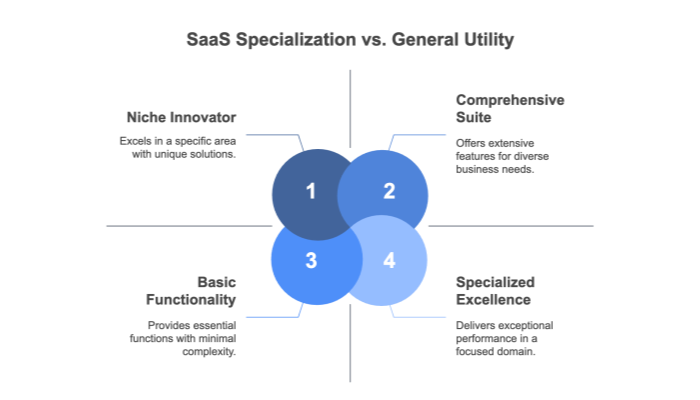

Ultimately, selecting between vertical and horizontal SaaS comes down to balancing specialized requirements against cost, scalability, and future-proofing. Consider your industry’s compliance needs, potential pivots, and budget constraints.
In many scenarios, it’s not purely about vertical or horizontal. You might use a core horizontal CRM plus a specialized vertical add-on for compliance. Or a vertical suite for advanced tasks, integrated with a horizontal collaboration platform for cross-functional teams.
According to Escape the SaaS Trap, adopting a “Smart SaaS” mindset—data ownership, transparent pricing, flexible configurations, robust security—ensures you remain vigilant about pitfalls, hidden fees, and data control.
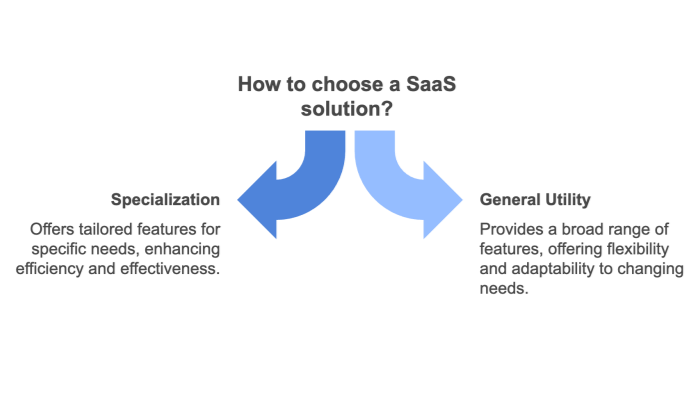

Vertical SaaS vs. horizontal SaaS is not a trivial choice. Each model addresses different business needs: horizontal solutions excel in broad applicability and rapid deployment, whereas niche SaaS solutions cater to highly specialized requirements—particularly in regulated industries or workflows demanding deep domain-specific customization.
However, no matter which path you choose, you must remain aware of potential pitfalls. Vertical SaaS lock-in can hamper your future flexibility, while hyper-generic horizontal tools may not fully satisfy complex or regulated demands—leading to manual workarounds or forced expansions with hidden costs. The best strategy is to align each solution’s features, compliance posture, and cost structure with your current goals and potential future pivots. Thoroughly vet the vendor’s transparency, data export policies, and roadmap commitments.
By applying the lessons from Escape the SaaS Trap—demanding Smart SaaS principles like data ownership, transparent pricing, flexible configurations, and robust security—businesses can unlock the full potential of SaaS. Whether you opt for a specialized (vertical) or broad (horizontal) platform, the guiding principle remains the same: SaaS should empower your company, not trap it. With due diligence and a clear-eyed approach, you can select the SaaS model that best supports your industry, workflows, and growth trajectory—without sacrificing control or agility.

Ready to explore these concepts further and safeguard your organization against hidden SaaS pitfalls? Our eBook Escape the SaaS Trap dives deeper into vendor lock-in, data ownership, and practical strategies for evaluating SaaS contracts. Learn how to maintain flexibility and keep costs in check—no matter which model you choose.
Download Escape the SaaS Trap now to make a confident, future-proof decision for your organization’s SaaS needs.